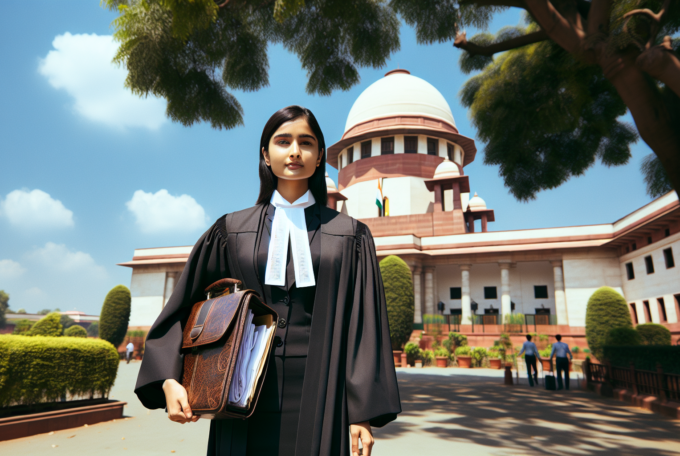Child custody is a critical aspect of family law that affects the lives of countless families across India. When parents separate or divorce, determining who will have legal custody of their children can be a contentious issue. This article aims to provide a comprehensive overview of child custody laws in India, including types of custody, relevant laws, and factors considered by courts when making custody decisions.
Understanding Child Custody
Child custody refers to the legal right to make decisions about a child’s upbringing and the responsibility for their care. In India, child custody laws are primarily governed by personal laws applicable to different religious communities, as well as the Guardians and Wards Act of 1890.
Types of Child Custody
In India, child custody can be broadly categorized into two types:
- Legal Custody: This refers to the right to make important decisions regarding the child’s welfare, education, health care, and religious upbringing.
- Physical Custody: This pertains to where the child will live on a day-to-day basis. Physical custody can be sole or joint.
Types of Custody Arrangements
Custody arrangements can further be classified into:
- Sole Custody: One parent has exclusive rights and responsibilities for the child.
- Joint Custody: Both parents share legal and/or physical custody, allowing them to make decisions together regarding the child’s upbringing.
- Visitation Rights: The non-custodial parent may have specific rights to visit the child at agreed times.
Laws Governing Child Custody in India
The primary laws governing child custody in India include:
- The Guardians and Wards Act, 1890: This act provides guidelines for appointing guardians for minors and emphasizes the welfare of the child as the paramount consideration.
- The Hindu Minority and Guardianship Act, 1956: Applicable to Hindus, this act outlines guardianship rights and responsibilities concerning minors.
- The Muslim Personal Law (Shariat) Application Act, 1937: Governs matters related to guardianship among Muslims in India.
- The Special Marriage Act, 1954: Provides provisions for couples married under this act concerning child custody matters.
Court Considerations in Custody Cases
Courts in India prioritize the best interests of the child when making custody decisions. Several factors are taken into account during this process:
- The Child’s Age: Generally, younger children may be placed with their mothers due to their need for nurturing care.
- The Child’s Wishes: Depending on their age and maturity level, children’s preferences may be considered by the court.
- The Parent’s Ability to Provide Care: Courts assess each parent’s ability to provide a stable environment for the child.
- The Parent’s Relationship with the Child: A strong emotional bond between parent and child can influence custody decisions.
- Moral Conduct of Parents: The moral character and conduct of each parent may also play a role in determining custody arrangements.
Case Studies: Precedents in Indian Child Custody Law
A few landmark cases have shaped child custody laws in India. Here are some notable examples:
- Kiran v. Rajesh (2004): In this case, the Supreme Court emphasized that a child’s welfare is paramount when deciding on custody issues. The court granted custody to the mother based on her ability to provide a nurturing environment.
- Sarita v. Ramesh (2011): The Delhi High Court ruled that joint custody should be considered when both parents are capable of providing love and support. This case highlighted that shared parenting could benefit children emotionally and psychologically.
Mediation and Alternative Dispute Resolution (ADR)
Mediation has emerged as an effective alternative for resolving child custody disputes amicably. It allows parents to negotiate terms without resorting to lengthy court battles. Mediation focuses on collaboration rather than confrontation, promoting better outcomes for children involved. Many courts now encourage mediation before proceeding with litigation.
The Role of Family Courts
The establishment of Family Courts under the Family Courts Act of 1984 has significantly impacted how child custody cases are handled in India. These courts aim to resolve family disputes more efficiently while ensuring that children’s best interests remain at heart. Family courts provide a more informal setting compared to traditional courts, allowing for sensitive handling of cases involving children.
Conclusion: Key Takeaways on Child Custody Laws in India
Navigating child custody laws in India can be complex due to varying personal laws and individual circumstances surrounding each case. Here are some key takeaways from this guide:
- The welfare of the child is always prioritized by Indian courts when making custody decisions.
- Sole or joint custody arrangements can significantly impact children’s emotional well-being; hence parents should consider collaborative solutions like mediation whenever possible.
- A thorough understanding of applicable laws is essential for parents seeking custodial rights over their children.
- Court precedents play an essential role in shaping future rulings; staying informed about landmark cases can provide valuable insights into potential outcomes.
If you find yourself facing a child custody issue or need legal advice tailored specifically for your situation, consider consulting with legal experts or utilizing resources like NyayGuru for guidance tailored to Indian laws. Understanding your rights and responsibilities is crucial in ensuring that you advocate effectively for your child’s best interests during challenging times.





